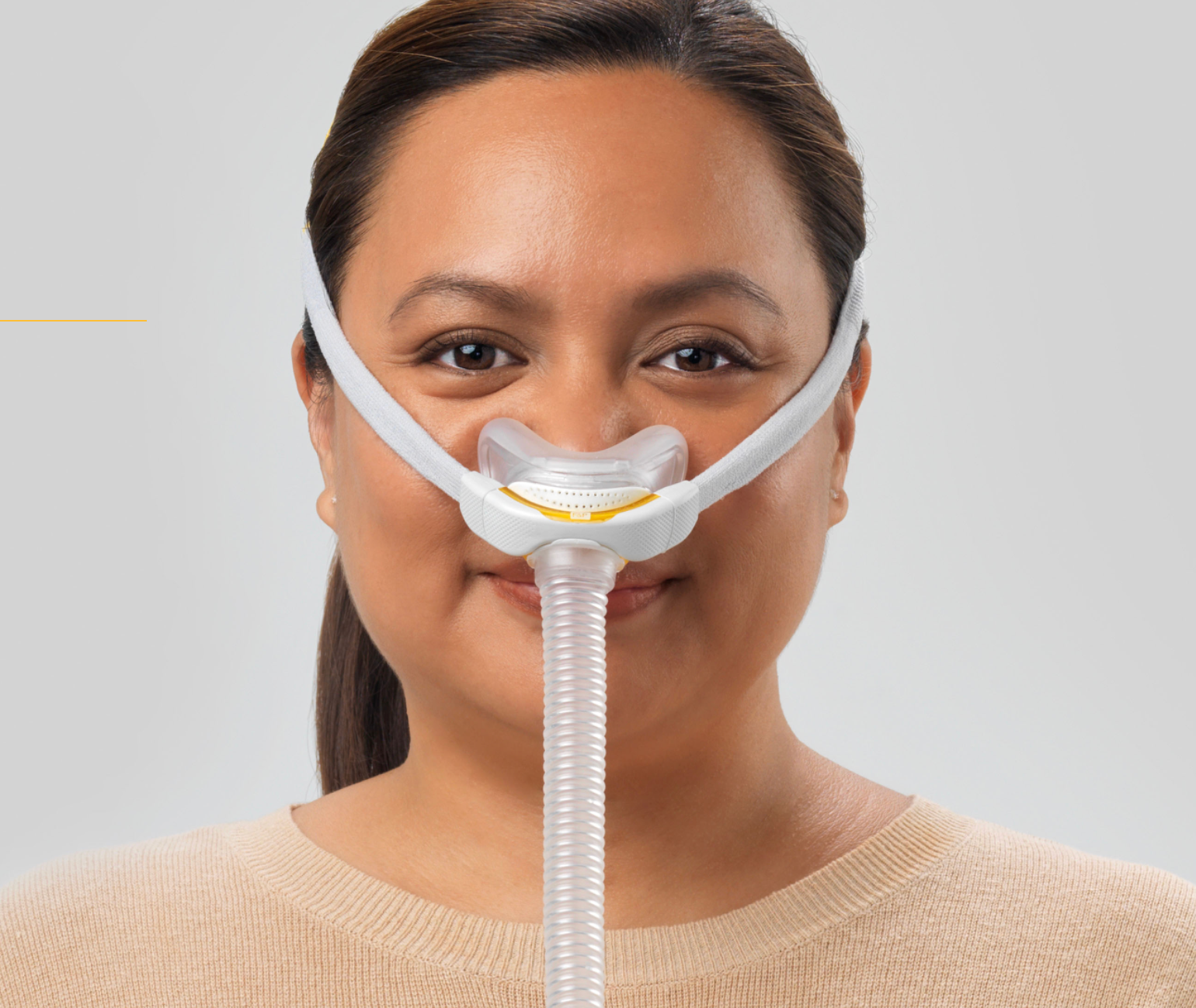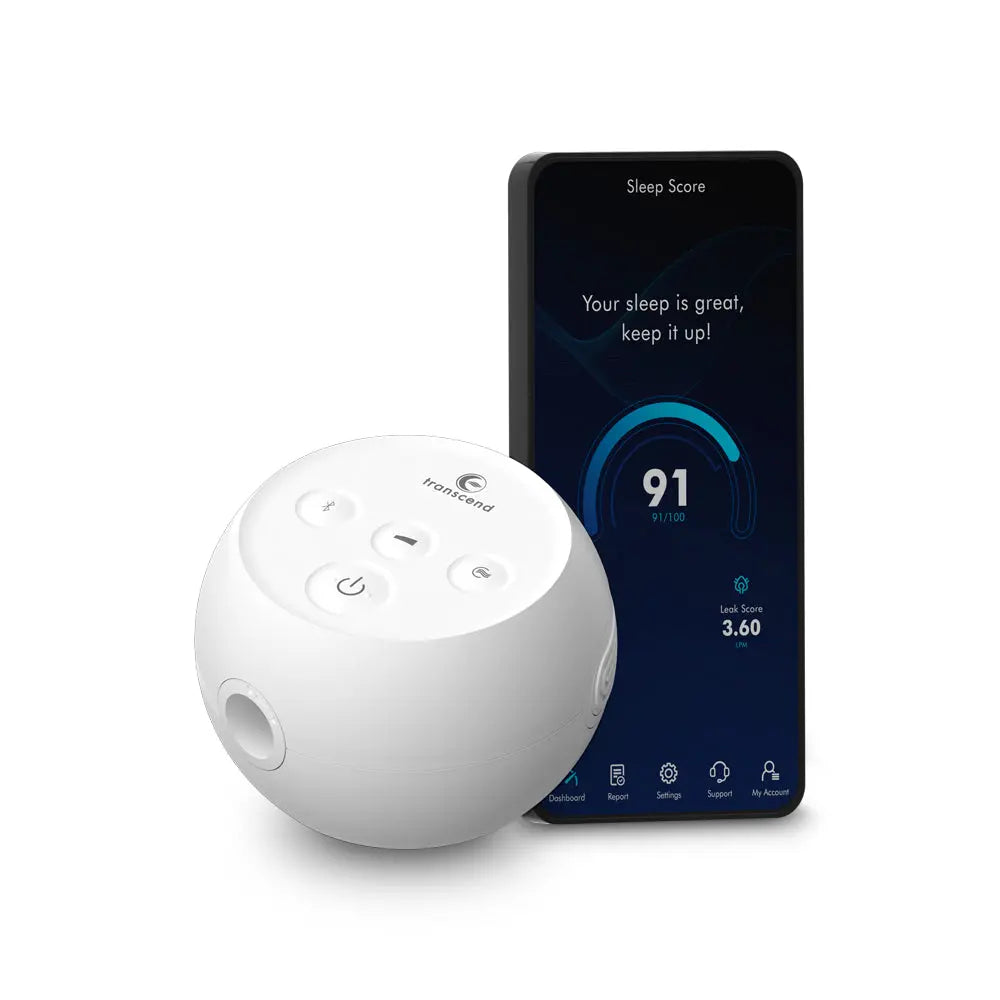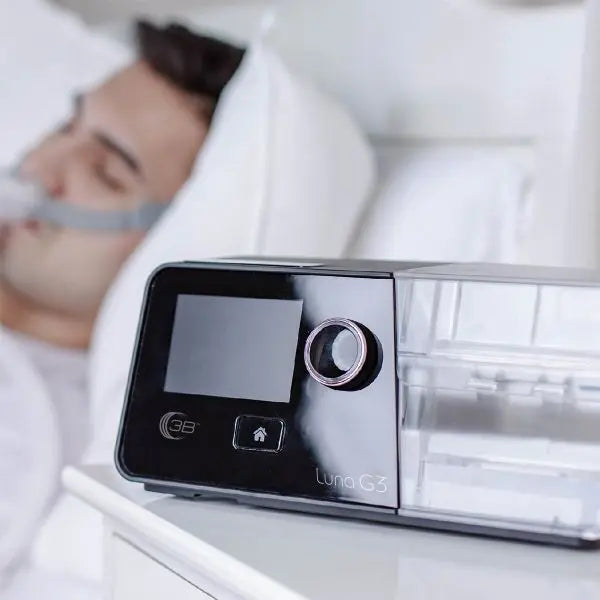Freeze Your Way to CPAP Victory?
Introduction
Sleep is a cornerstone of health, influencing everything from mood to heart function. For the millions living with obstructive sleep apnea (OSA), a condition where breathing pauses repeatedly during sleep, achieving restful sleep is both critical and challenging. These pauses, caused by airway obstruction, fragment sleep and raise risks for serious conditions like hypertension and stroke. One often-overlooked factor in sleep quality is room temperature. Many advocate for cooler bedrooms, citing better sleep, but for OSA patients, the impact is less straightforward. This 5,000-word guide explores whether sleeping in a cold room helps or hinders those with sleep apnea, drawing exclusively on peer-reviewed studies to provide evidence-based insights. We’ll examine how temperature affects sleep quality, apnea severity, and CPAP adherence, offering practical strategies to optimize your sleep environment.
Why Room Temperature Matters for Sleep
Your body’s core temperature naturally drops as you prepare for sleep, a process tied to circadian rhythms. A cooler room—typically between 60 and 67 degrees Fahrenheit (15.6 to 19.4 degrees Celsius)—supports this drop, promoting faster sleep onset and deeper sleep stages like slow-wave sleep. For the general population, this temperature range enhances sleep efficiency, the percentage of time in bed actually spent sleeping. However, extremes—too hot or too cold—can disrupt sleep by increasing wakefulness or reducing restorative sleep phases.
For older adults, who are more likely to have OSA, the ideal range shifts slightly higher, to 68 to 77 degrees Fahrenheit (20 to 25 degrees Celsius). A 2023 study titled “Nighttime ambient temperature and sleep in community-dwelling older adults” found that sleep efficiency dropped by 5 to 10 percent when temperatures exceeded 77 degrees Fahrenheit, highlighting the need for a balanced thermal environment. For OSA patients, temperature’s role is even more complex, as it may influence not just sleep quality but also the frequency and severity of breathing interruptions.
Sleep Apnea: A Brief Overview
Obstructive sleep apnea affects roughly 17 to 31 percent of adults, with higher prevalence in men and older age groups. It occurs when the upper airway collapses during sleep, leading to apneas (complete breathing stops) or hypopneas (partial reductions in airflow). These events, measured by the apnea-hypopnea index (AHI), disrupt oxygen levels and sleep continuity, causing daytime fatigue, cognitive issues, and increased cardiovascular risks. Treatment often involves continuous positive airway pressure (CPAP) machines, which deliver air to keep the airway open, but adherence can be challenging.
Environmental factors, including room temperature, may exacerbate or alleviate OSA symptoms. Colder temperatures, for instance, could affect airway dynamics or CPAP comfort, while warmer conditions might influence sleep architecture differently. Understanding these effects is key to tailoring sleep environments for OSA patients.
The Science of Cold Rooms and Sleep Quality
A foundational study, “Effects of thermal environment on sleep and circadian rhythm” (2012), explains how temperature shapes sleep. Cooler environments reduce wakefulness and enhance slow-wave and REM sleep, critical for physical and mental restoration. The study notes that temperatures below 60 degrees Fahrenheit or above 77 degrees Fahrenheit increase arousal, fragmenting sleep. For healthy adults, a room at 61 degrees Fahrenheit often feels ideal, promoting longer, more efficient sleep.
For OSA patients, however, the picture shifts. A landmark 2012 study, “Ambient Temperature and Obstructive Sleep Apnea: Effects on Sleep, Sleep Apnea, and Morning Alertness,” tested 40 untreated OSA patients (AHI 10 to 30) at three temperatures: 60.8 degrees Fahrenheit (16 degrees Celsius), 68 degrees Fahrenheit (20 degrees Celsius), and 75.2 degrees Fahrenheit (24 degrees Celsius). Results showed a clear pattern:
- Apnea Severity: At 60.8 degrees Fahrenheit, the obstructive AHI was highest (30 ± 17 events per hour), compared to 28 ± 17 at 68 degrees Fahrenheit and 24 ± 17 at 75.2 degrees Fahrenheit. Statistical significance (P = 0.001 for 60.8 versus 75.2 degrees) confirmed colder rooms worsened apnea events.
- Sleep Duration: Total sleep time was longest at 60.8 degrees Fahrenheit (428 ± 62 minutes), followed by 420 ± 66 minutes at 68 degrees Fahrenheit, and shortest at 75.2 degrees Fahrenheit (397 ± 70 minutes). The difference was significant (P = 0.009).
- Sleep Efficiency: Efficiency peaked at 60.8 degrees Fahrenheit (77 ± 11 percent), compared to 75 ± 11 percent at 68 degrees Fahrenheit and 71 ± 13 percent at 75.2 degrees Fahrenheit (P = 0.012).
- Morning Alertness: Using the Karolinska Sleepiness Scale (KSS), patients felt least sleepy at 60.8 degrees Fahrenheit (score 4.1 ± 1.4) versus 4.7 ± 1.6 at 75.2 degrees Fahrenheit (P < 0.028).
These findings reveal a paradox: colder rooms increased apnea severity but improved sleep duration, efficiency, and morning alertness. Patients slept longer and felt more refreshed at 60.8 degrees Fahrenheit, despite more breathing disruptions. Warmer rooms, at 75.2 degrees Fahrenheit, reduced AHI but shortened sleep and lowered efficiency, leaving patients feeling sleepier.
Why Cold Rooms Might Worsen Apnea
The increase in AHI at colder temperatures may stem from physiological changes. Cold air can cause vasoconstriction in the upper airway, narrowing it and increasing collapse risk. Dry, cold air may also irritate airway tissues, worsening obstruction. Additionally, colder temperatures could alter respiratory control, making the airway more prone to collapse during sleep. These factors likely explain why 60.8 degrees Fahrenheit saw a higher AHI than 75.2 degrees Fahrenheit in the study.
Despite this, the improved sleep quality at colder temperatures suggests subjective benefits. Longer sleep and better efficiency may reflect reduced arousals unrelated to apnea events, allowing patients to feel more rested. This disconnect—worse objective measures but better subjective experience—highlights the complexity of managing OSA in varied thermal environments.
Seasonal Patterns and Cold Weather
Beyond controlled studies, real-world data shows temperature’s impact. A 2012 study, “Is sleep apnea a winter disease?: meteorologic and sleep laboratory evidence collected over 1 decade,” analyzed 7,523 patients over 10 years. It found a 20 percent rise in AHI during winter (median 17.8 events per hour) compared to summer (median 15.0). The inverse correlation with ambient temperature suggests colder conditions, typical of winter, exacerbate OSA. Factors like dry air, higher atmospheric pressure, or seasonal allergies may contribute, aligning with the controlled findings of higher AHI at 60.8 degrees Fahrenheit.
Winter’s effect isn’t just about temperature. Humidity drops in cold months, potentially drying airway tissues and increasing obstruction risk. For OSA patients, this underscores the need to consider environmental factors year-round, not just in the bedroom.
CPAP Users: Does Cold Help or Hinder?
CPAP therapy is the gold standard for OSA, but adherence is a hurdle—up to 50 percent of patients struggle with consistent use. Temperature may play a role here. A 2025 study, “The influence of atmospheric temperature on long-term CPAP-usage in patients with obstructive sleep apnea,” tracked 8,151 patients from 2018 to 2023. It found a non-linear relationship between temperature and CPAP use:
- Below 64.4 degrees Fahrenheit (18 degrees Celsius), each 1-degree Celsius rise slightly reduced CPAP use (0.24 minutes per day).
- From 64.4 to 84.2 degrees Fahrenheit (18 to 29 degrees Celsius), the drop was steeper (1.8 minutes per degree).
- Above 84.2 degrees Fahrenheit, use fell sharply (3.6 minutes per degree), with a mean reduction of 30.3 minutes per day compared to temperatures below 41 degrees Fahrenheit (5 degrees Celsius).
These data suggest colder rooms encourage better CPAP adherence. Warmer temperatures may cause discomfort, such as mask sweating or air feeling too warm, discouraging use. For patients at 60.8 degrees Fahrenheit, the colder environment might make CPAP therapy more tolerable, potentially offsetting the higher AHI seen in untreated patients at that temperature.
Balancing Act: Cold Rooms for OSA Patients
The evidence presents a nuanced picture. For untreated OSA patients, colder rooms (around 60.8 degrees Fahrenheit) offer longer, more efficient sleep and better morning alertness but increase apnea severity, which could strain health over time. Warmer rooms (75.2 degrees Fahrenheit) reduce AHI but shorten sleep and lower efficiency, potentially leaving patients less rested. For CPAP users, colder rooms may boost adherence, helping manage apnea despite a possible uptick in underlying severity.
Older adults, a key OSA demographic, may benefit from a middle ground. The 2023 study on older adults suggests 68 to 77 degrees Fahrenheit optimizes sleep efficiency, and the 2012 OSA study found 68 degrees Fahrenheit (20 degrees Celsius) balanced AHI (28 ± 17) with decent sleep time (420 minutes) and efficiency (75 percent). This range may minimize apnea events while preserving restfulness.
Practical Strategies for OSA Patients
Based on the science, here are tailored strategies for sleeping in a cold room with OSA:
- Set a Moderate Temperature: Aim for 68 to 75 degrees Fahrenheit (20 to 24 degrees Celsius). This range reduces AHI compared to colder settings while supporting sleep quality. For CPAP users, slightly cooler (65 degrees Fahrenheit or 18 degrees Celsius) may enhance device comfort.
- Use a Humidifier: Cold air can dry airways, worsening obstruction. A humidifier, especially in winter, keeps tissues moist. CPAP users should use heated humidification to counter dry air from the machine.
- Optimize CPAP Settings: Work with your doctor to adjust CPAP pressure for colder conditions, as airway dynamics may shift. Ensure the mask fits well to avoid leaks, which can worsen in dry, cold air.
- Layer Bedding: Use breathable, layered bedding to stay comfortable without overheating. This prevents arousals from feeling too cold or too warm, supporting sleep continuity.
- Monitor Symptoms: Track daytime fatigue and snoring intensity. If a colder room increases sleepiness despite longer sleep, consult a sleep specialist to assess AHI changes.
- Winter Precautions: In colder months, when AHI may rise, prioritize CPAP use and consider a slightly warmer bedroom (around 70 degrees Fahrenheit) to ease airway strain.
Individual Considerations
Not all OSA patients respond the same way. Factors like body weight, airway anatomy, and coexisting conditions (e.g., nasal congestion) influence how temperature affects sleep. Women, who often have milder OSA, may tolerate colder rooms better, while men with severe OSA might need warmer settings to minimize AHI. Age also matters—older adults may prefer 68 to 77 degrees Fahrenheit, while younger patients might lean toward 65 degrees Fahrenheit for comfort.
Consulting a sleep specialist is crucial. Polysomnography (sleep studies) can clarify how temperature impacts your AHI, and CPAP data can reveal adherence patterns. Personalized adjustments ensure the bedroom environment aligns with your health needs.
Broader Implications
The interplay of temperature and OSA has implications beyond the bedroom. Employers, healthcare providers, and policymakers should recognize environmental factors in managing chronic conditions. For instance, workplace fatigue from poor sleep could affect productivity, and hospitals might optimize room temperatures for OSA patients recovering post-surgery. Public health campaigns could educate on sleep hygiene, emphasizing temperature’s role for at-risk groups.
Limitations of Current Research
While robust, the studies have limits. The 2012 OSA temperature study used a small sample (40 patients), and all were untreated, so CPAP effects weren’t directly tested. Seasonal data reflects correlations, not causation, and factors like humidity or allergies may confound results. The CPAP adherence study didn’t isolate bedroom temperature, as it used atmospheric data. Future research needs larger, diverse cohorts, real-world bedroom settings, and long-term health outcomes to refine recommendations.
Conclusion
Sleeping in a cold room offers both promise and pitfalls for OSA patients. Cooler temperatures, around 60.8 degrees Fahrenheit, can extend sleep, boost efficiency, and sharpen morning alertness, but they increase apnea severity, posing health risks. Warmer rooms, near 75.2 degrees Fahrenheit, curb AHI but may shorten sleep, leaving patients less rested. CPAP users might find colder rooms improve adherence, balancing some risks. A moderate range—68 to 75 degrees Fahrenheit—strikes a practical balance for most, with tweaks based on individual needs.
By understanding these trade-offs, OSA patients can make informed choices. Pairing a tailored room temperature with CPAP use, humidification, and medical guidance can transform sleep from fragmented to restorative. Always consult a healthcare provider to align these strategies with your unique health profile, ensuring better nights and brighter days.
Bibliography (AMA Style)
- Baniassadi A, Manor B, Yu W, et al. Nighttime ambient temperature and sleep in community-dwelling older adults. Sci Total Environ. 2023;899:165623. doi:10.1016/j.scitotenv.2023.165623
- Cassol CM, Martinez D, da Silva FASS, et al. Is sleep apnea a winter disease?: meteorologic and sleep laboratory evidence collected over 1 decade. Chest. 2012;142(6):1499-1507. doi:10.1378/chest.11-2037
- Gagnadoux F, Nguyen XL, Le Vaillant M, et al. The influence of atmospheric temperature on long-term CPAP-usage in patients with obstructive sleep apnea. Sleep Med. 2025;117:109-115. doi:10.1016/j.sleep.2025.01.023
- Okamoto-Mizuno K, Mizuno K. Effects of thermal environment on sleep and circadian rhythm. J Physiol Anthropol. 2012;31(1):14. doi:10.1186/1880-6805-31-14
- Valham F, Sahlin C, Stenlund H, Franklin KA. Ambient temperature and obstructive sleep apnea: effects on sleep, sleep apnea, and morning alertness. Sleep. 2012;35(4):513-517. doi:10.5665/sleep.1736








Leave a comment
This site is protected by hCaptcha and the hCaptcha Privacy Policy and Terms of Service apply.